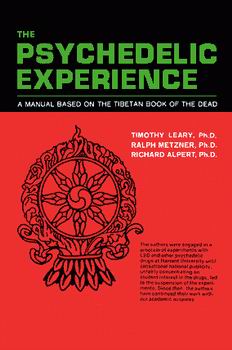For the Next
7 Generations documents the momentous journey of 13 Indigenous
Grandmothers, as they travel around the globe to promote world peace and
share their indigenous ways of healing. Originating from all four
corners, these 13 wise women elders, shamans and medicine women, first
came together in 2004 at a historic gathering in Upstate New York.
Motivated by their concern for our planet, they decided to form an
alliance. The film begins at their first gathering follows them to the
Amazon rain-forest, the mountains of Mexico, throughout North America,
and to Dharamsala, India, for a private meeting with the Dalai Lama.
Facing a world in crisis, the Grandmothers share with us their visions
of healing and a call for change now, before it’s too late. This film
documents their unparalleled journey and timely perspectives on a
timeless wisdom.
watch the movie here
for more info on the movie and the 13 grandmothers go here
native american prophecy
"Sacred Circles"
The hoop dancer symbolizes the renewal of
the earth. He dances within cycles, a celebration of the renewal of the
Earth's own cycles.
This hoop dancer dances on the image of
the earth which was glimpsed by the astronauts from space when man first
walked on the moon. When we first saw the earth from space, it was
hoped that there would be a new consciousness that would come from this
first ability to view ourselves; our planet. We could now see our
planet. Now that we could see ourselves from space, surely we would
realize how fragile the earth really is, that we are but one object in
space. Surely with this new perspective, we will honor the earth more.
Perhaps we will preserve the earth, our only planet to live on.
May this hoop dancer's sacred circles
renew mother Earth, her sacred cycles, and our consciousness of the
delicate and difficult nature of this cyclic dance.
The Elder Brothers of The Koji Tribe
Warning to the Younger Brothers (us) about destroying mother earth. An
awesome documentary from lost Atlantean civilization in the Columbian
mountains. They are truly enlightened brothers who can teach us brethren
a thing or two about how to live.
The Kogi (Cogui or Kágaba), translated
"jaguar" in the Kogi language are a Native American ethnic group that
lives in the Sierra Nevada de Santa Marta in Colombia. Their
civilization has continued since the Pre-Columbian era.
The Kogi claim to be descendants of the
Tairona culture, which flourished before the time of the Spanish
conquest. The Tairona were forced to move into the highlands when the
Caribs invaded around 1000 CE, according to the Federal Research
Division of the Library of Congress which allowed them to evade the
worst effects of the Spanish colonization. Like so many ancient myths
concerning holy mountains at the "centre of the world", their mythology
teaches that they are "Elder Brothers" of humanity, living in the "Heart
of the World" (the Sierra Nevada of Santa Marta). Those not living in
the Heart of the World are called "Younger Brothers." Their mythology
suggests that these Younger Brothers were sent away from the heart of
the world long ago, seemingly in reference to these same Carib people
who are said to have originated from South America.
The Kogi base their lifestyles on their
belief in "The Great Mother," their creator figure, whom they believe is
the force behind nature, providing guidance. The Kogi understand the
Earth to be a living being, and see the colonizers' mining, building,
pollution and other activities damaging the Great Mother.
The Kogi Mamas have remained isolated
from the rest of the world since the Spanish Conquistadors came to
plunder South America for gold.The Kogi Mamas claim that the balance of
the earth's ecology has been suffering since these times and that
'Younger Brother' (modern humanity) is to blame. The Kogi Mamas in turn
term themselves as 'Elder Brother' claiming that their religious work is
instrumental in helping to prolong and protect life on earth. In an
attempt to prevent further ecological catastrophe, the Kogi Mamas broke
their silence and chose to allow a small BBC film crew into their
isolated mountaintop civilization to hear their message, a warning to
'Younger Brother'. The subsequent messages and warnings were voiced in
the documentary The Heart of The World: Elder Brother's Warning. After
the documentary was filmed, the Kogi Mamas took away any means for
'Younger Brother' to enter their civilization and once again returned to
their work in isolation.
The Black Line Journey
The Black Line forms a virtual triangle
around the base of the SNSM (Sierra Nevada de Santa Marta),
approximately 100 miles on each side, connecting 54 sacred sites. The
Line is a spiritual boundary that demarcates the ancestral territory of
the four indigenous groups of the Sierra Nevada, the Koguis, Arhuacos,
Wiwas and Kankuamos. The purpose of the Mamos’ journey is to make
offerings at these sites in compliance with their “Law of Origin”. The
Mamos have been making these offerings for millennia. This is how they
care for the Sierra Nevada, which they call “The Heart of the World”.


























